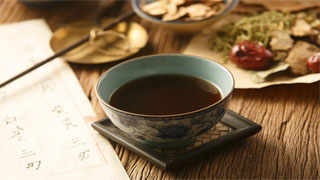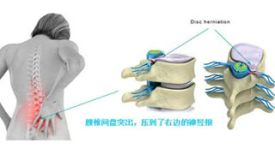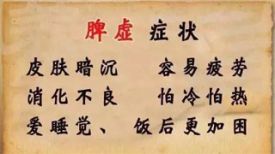This disease belongs to the categories of traditional Chinese medicine such as "Bi syndrome" and "Hegenu wind". Its etiology is mostly overwork, deficiency and injury, resulting in liver and kidney deficiency, insufficient qi and blood, bone blood stasis, muscle qi stagnation, and wind cold dampness evil lingering in the knee, forming Bi syndrome.
Therefore, in clinical practice, the therapeutic principles and methods of tonifying liver and kidney qi and blood, activating blood and qi, relaxing muscles and activating collaterals, dispelling wind and cold, and anti-aging and preventing senility are often used to achieve the purpose of rehabilitation and health care.
On the basis of the above treatment principles and methods, the author has achieved good therapeutic effects by applying the following three methods based on syndrome differentiation in the treatment of this disease.
Tonifying Kidney and Strengthening Knee Decoction

Take one dose daily, decoct in water and take three times, with one course of treatment per month. Boil the medicine residue in hot water, smoke and wash it, or stir fry it with wine, put it in a bag, and iron the affected area. Repeat this process daily for 20 minutes each time. 58 cases were treated, with a total effective rate of 89.5%.
This prescription is suitable for patients with qi deficiency and blood stasis, and insufficient kidney yang.
Typical case: Zhou, male, 72 years old, farmer. Visited on December 5, 2009. The patient experienced recurrent knee pain for over a year, with this episode lasting for more than a month and worsening for half a month. It worsened at night, with the left knee being particularly painful and swollen. The patient preferred warmth and cold, had difficulty flexing and extending, and was accompanied by fatigue and fatigue. It was necessary to hold a cane when moving. The knee feels cold. The face is devoid of vitality, the tongue is pale with white coating, and the pulse is deep, thin, and weak. After half a month of treatment with the upper part, the pain decreased and swelling subsided, and the action was more effective. Therefore, it was changed to Xiaoshui Pill, with 6g each time, three times a day, and taken continuously for 45 days to recover normal. No abnormalities were found during a one-year follow-up.
Shujin Jiangeng Tang
30g of Chicken Blood Vine, 20g of Deer Headed Grass, Stretching Muscle Grass, Thorough Bone Grass, Weilingxian, and Geranium Grass each, 15g of Huai Niu Xi, papaya, and Qianjin Ba each, and 10g of Bone Fragment Bu and Lu Lu Tong each.
For those with severe cold and dampness, add 10g of Sichuan Aconitum and 10g of Osmanthus branches, and 15g of Atractylodes macrocephala; For those with severe dampness and heat, 30g of raw coix seed, 15g of yellow cypress, and 15g of Atractylodes macrocephala will be added; For those with swelling, add 15g each of Luo Shi Teng, Dan Shen, and Di Long. Take 1 dose daily, boiled in water and divided into 3 doses. For those with severe cold and dampness, stir fry the medicinal residue wine into a bag and heat iron the affected area, once a day for 20 minutes each time. 1 course of treatment in January. 46 cases were treated, with a total effective rate of 96.5%.
This method is suitable for elderly people with obvious lesions and decent qi.
Typical case: Qi, male, 62 years old, farmer. Visited on November 16, 2007. Knee joint pain and swelling last for more than 10 days, and the pain worsens when going downhill or down stairs, as well as when encountering cold. However, I can still persist in some agricultural work. The tongue coating is thin and white, and the veins are thick and solid. After one month of treatment with upper addition and subtraction, the patient returned to normal and was followed up for one year without any abnormalities.
Shouwu Duhuo Tang
20g each for Polygonum multiflorum, Rehmannia glutinosa, Mulberry Parasite, and Angelica sinensis, 15g each for Angelica sinensis, Dog spine, Salvia miltiorrhiza, Chicken Blood Vine, and Thousand catties Extract, and 10g each for Chuan Niu Xi and Papaya.
For those who experience severe cold, add 20g of Epimedium, 6g of Sichuan Aconitum and 6g of Grass Aconitum respectively; For those with localized redness, 30g of Bixie and 30g of Hedyotis diffusa each should be added; If there is obvious local tenderness and tongue congestion sign, add 12g each of Tu Yuan and Su Mu, or 9g each of Ru Wu. Take 1 dose daily, boiled in water and divided into 3 doses.
Reuse the medicine residue using the method of 1 or 2 formulas. After 1-2 weeks of continuous administration, change to small water pills, taking 6g each time, 3 times a day, for more than 1 month. 78 cases were treated, with a total effective rate of 94.4%.
This prescription is applicable to patients who have witnessed the deficiency of liver and kidney essence and blood.
Typical case: Wei, female, 75 years old, farmer. Visited on April 17, 2010. Knee pain, poor flexion and extension, intermittent attacks for over a year, difficulty squatting and sitting up, inconvenient movement, worsening at night, accompanied by lower back pain, fatigue, and occasional dizziness. Knee tenderness in front and on both sides. The tongue has a darker texture and a white coating. The pulse is deep, fine, and astringent. After more than 10 days of treatment with the addition and subtraction above, the symptoms improved significantly and were changed to taking Xiaoshui Wan continuously for two months to return to normal. In October of the following year, due to fatigue and catching a cold, there was a recurrence, but the symptoms were milder than before. After more than a month of treatment, the patient returned to normal and was followed up for one year without any abnormalities.


